Visit the Nishijin Kimono Museum Dressed in a Kimono
Kyoto is a city that breathes tradition. Every street, every wooden house, and every temple whispers stories of centuries past. Yet, among all its cultural treasures, few experiences feel as authentically Japanese as visiting the Nishijin Textile Center—often called the Nishijin Kimono Museum—while dressed in a beautiful kimono.
This is not just another museum visit; it is a journey into the living art of Japanese weaving, color, and elegance. The Nishijin district, known for producing the most exquisite silk fabrics in Japan, is where Kyoto’s textile heart still beats today. And when you step into this world wearing a kimono, you don’t just see the culture—you become part of it.
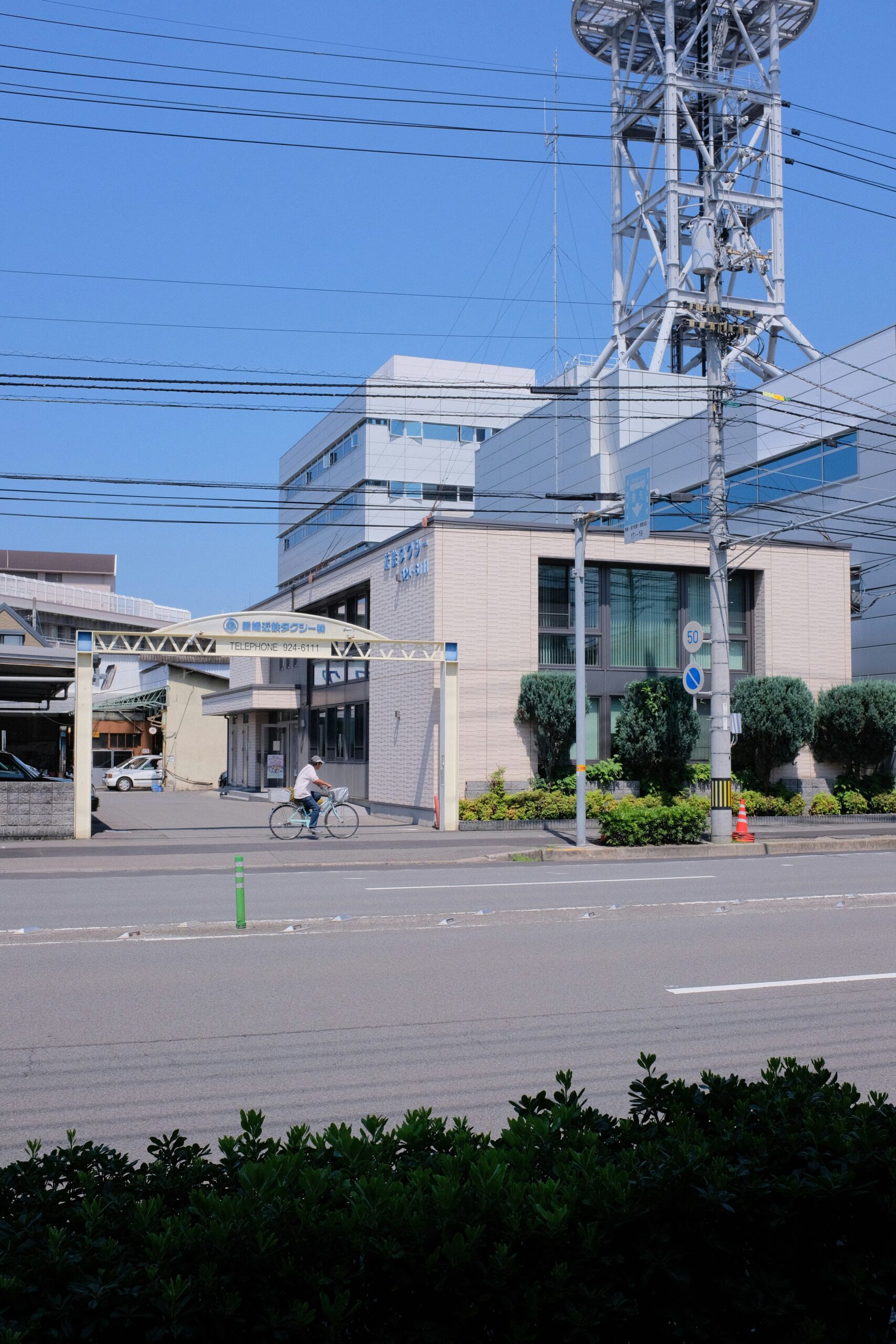
The Nishijin Textile Center welcomes visitors to explore over 1,200 years of weaving heritage
- Kyoto’s Living Textile Heritage
- Inside the Nishijin Textile Center
- Dressing in a Kimono: More Than a Costume
- Capture the Moment with AllPhoto-Kyoto
- The Art of Nishijin-Ori: A Closer Look
- Seasonal Beauty: When to Visit Kyoto
- Tips for an Unforgettable Visit
- Beyond the Museum: Explore the Nishijin District
- Why This Experience Resonates Globally
- Capture, Share, and Remember
- Final Thoughts
Kyoto’s Living Textile Heritage
Nishijin (西陣) is more than a neighborhood. It is the birthplace of Japan’s most luxurious woven textiles, known as nishijin-ori. For over 1,200 years, artisans have been weaving silk with gold and silver threads, creating fabrics once reserved for nobles and samurai.
Walking through the narrow streets of Nishijin, you can still hear the rhythmic sound of looms behind old machiya townhouses. Each artisan’s studio tells a silent story of patience, precision, and pride. What makes Nishijin unique is not just the beauty of the fabrics, but the depth of tradition that sustains them.
The district flourished during the Heian period (794–1185), when Kyoto was Japan’s imperial capital. Silk weavers supplied the court with robes that reflected the elegance and refinement of the era. Over centuries, techniques evolved, patterns became more elaborate, and Nishijin-ori turned into an art form celebrated worldwide.
When you visit the Nishijin Textile Center today, you witness this living legacy firsthand. The museum is not simply a static display—it’s a vibrant workshop where history continues to be woven before your eyes.
Inside the Nishijin Textile Center
Located on Imadegawa Street in Kyoto’s Kamigyō Ward, the Nishijin Textile Center is both a museum and a cultural studio. The building looks modest from the outside, but step inside and you’ll find a seven-story space filled with color, sound, and texture.
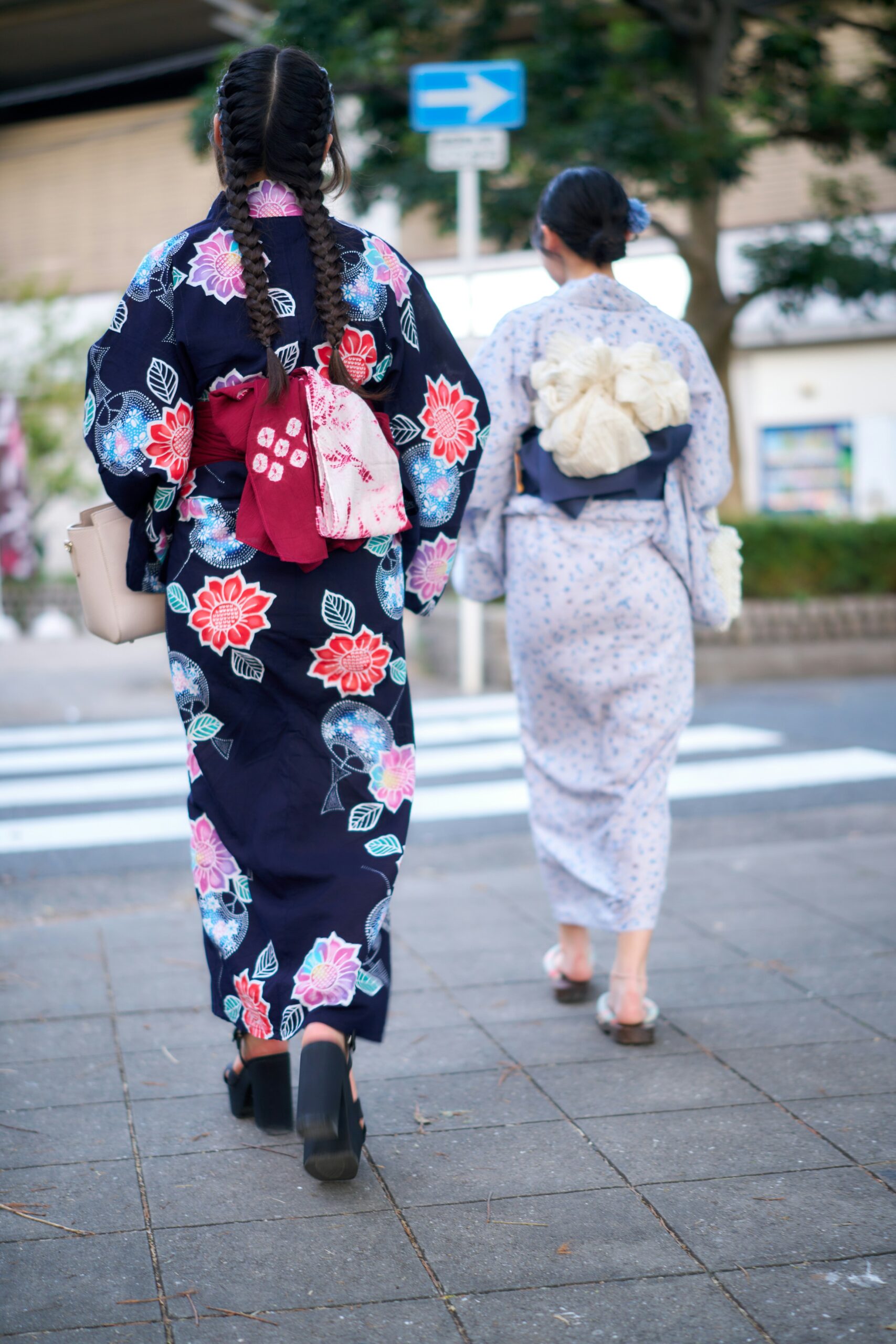
Master artisans demonstrate centuries-old weaving techniques on traditional looms
On the ground floor, you can observe skilled artisans weaving intricate brocade on traditional looms. Their movements are deliberate and almost meditative. A single piece of fabric can take days—or even weeks—to complete, depending on the pattern.
Further inside, there are exhibitions of antique kimonos, ceremonial garments, and textile art from different eras of Japanese history. Some displays show the evolution of kimono patterns over time—floral motifs, cranes, waves, and geometric shapes—all carrying cultural symbolism.
Upstairs, visitors can participate in short weaving workshops. For a small fee, you can try your hand at creating a small textile sample, guided by a professional craftsperson. It’s a hands-on way to appreciate how much skill and discipline this art demands.
The center also hosts a kimono fashion show several times a day. Models walk across the stage wearing elegant, seasonal kimono—vibrant furisode for young women, refined tomesode for formal occasions, and the timeless simplicity of men’s montsuki. Cameras flash, tourists smile, and for a moment, the centuries-old craft of Nishijin comes alive in movement and color.
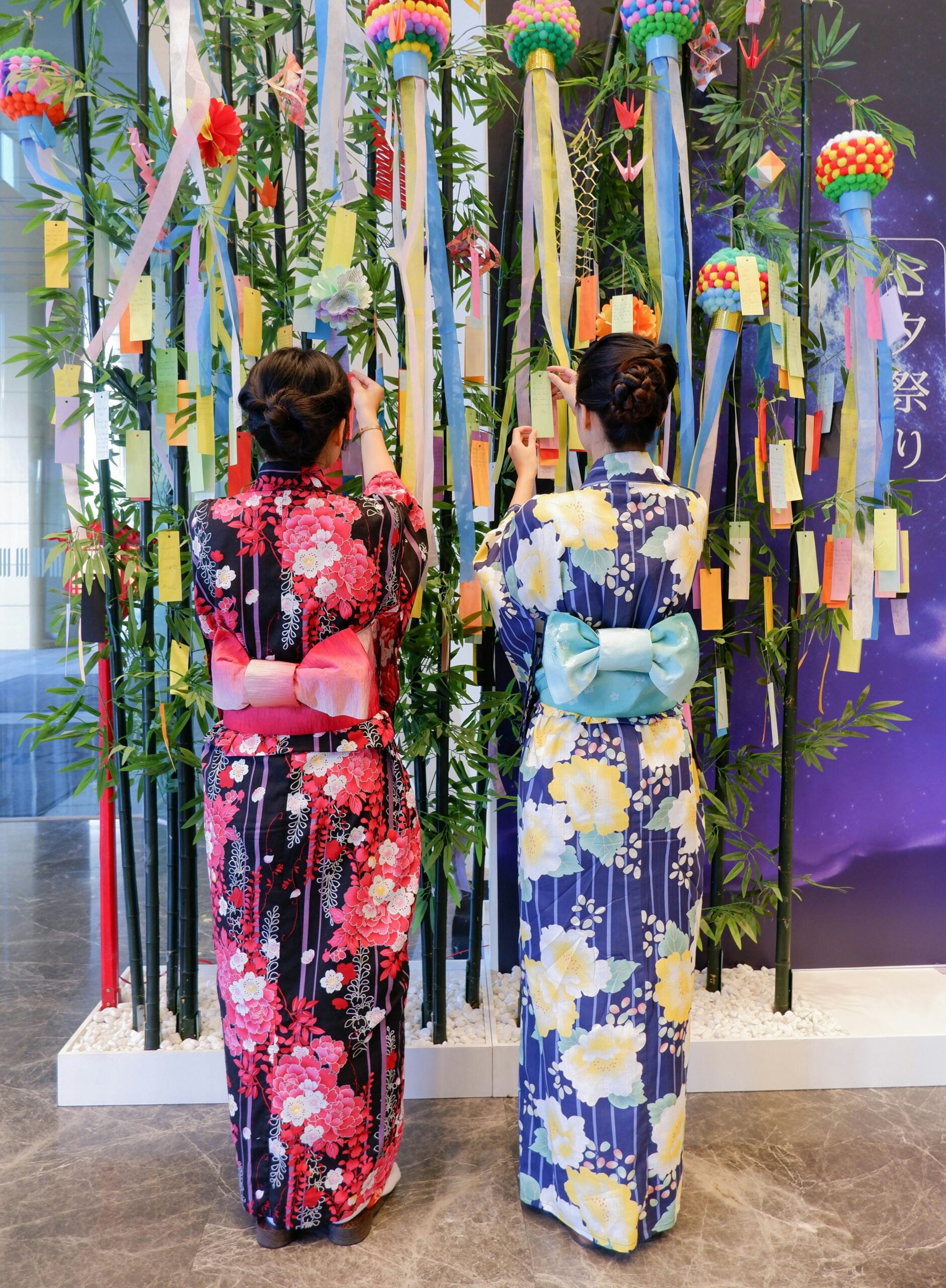
Daily kimono fashion shows showcase the elegance of traditional Japanese dress
Dressing in a Kimono: More Than a Costume
Wearing a kimono is not just about clothing—it’s a cultural statement. It connects you to Japan’s philosophy of aesthetics: simplicity, harmony, and respect for tradition.
At the Nishijin Textile Center, you can rent a kimono and have professionals help you dress properly. The process itself is fascinating. Layers of silk are carefully wrapped, tied, and adjusted until the perfect balance of form and comfort is achieved. The obi (sash) is knotted precisely, hair accessories are added, and suddenly you are no longer a tourist—you’re part of Kyoto’s living tradition.
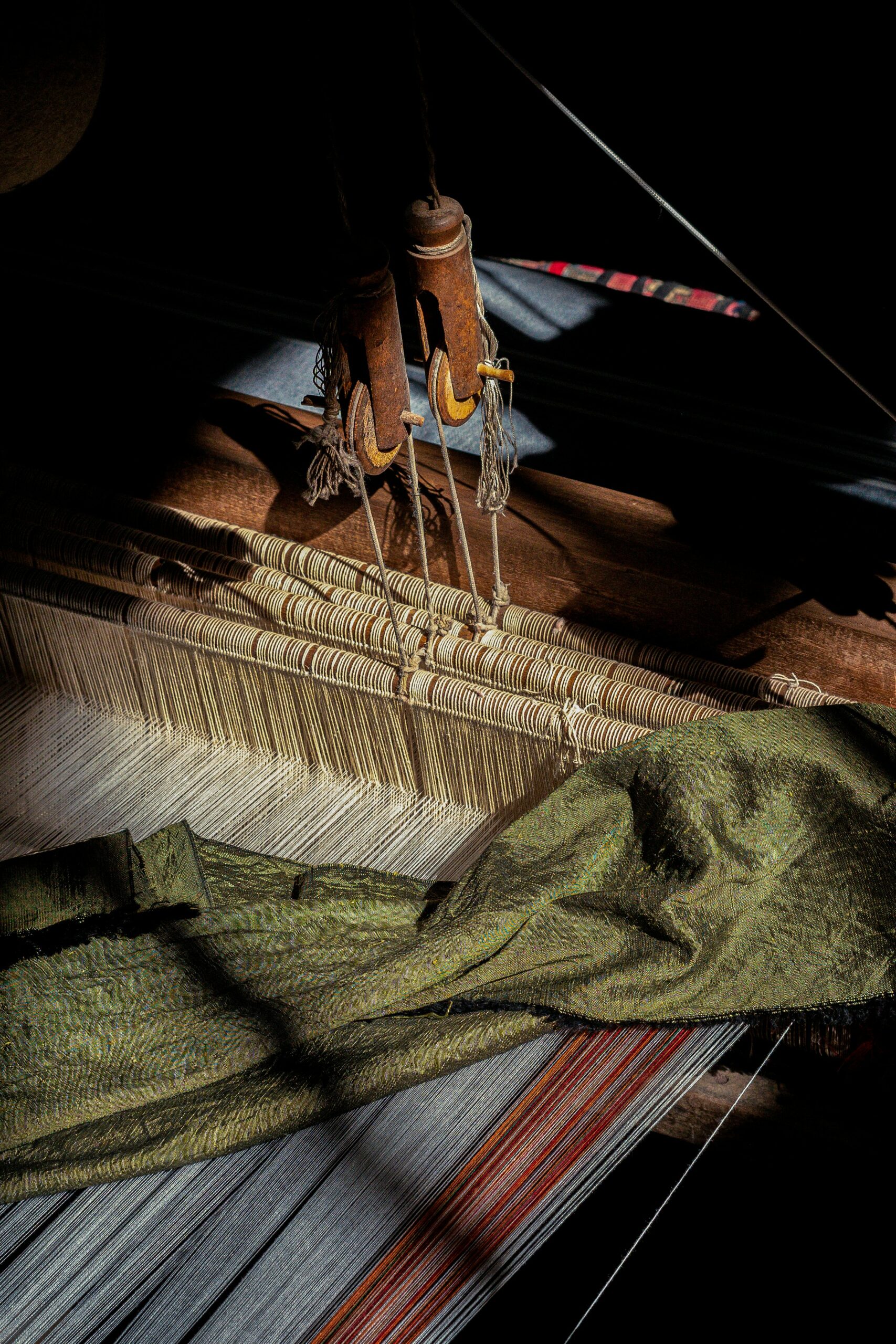
Experience the transformative beauty of wearing authentic kimono in historic Kyoto
Many visitors choose to walk around the museum or even step outside into the Nishijin district while wearing their kimono. The old houses, narrow lanes, and small shrines create a dreamlike backdrop. You feel as if you’ve stepped back in time to an era when Kyoto was the cultural heart of Japan.
But the experience doesn’t end there. For those who want to immortalize this moment, professional photo sessions are available nearby. This is where AllPhoto-Kyoto comes in—specializing in capturing the magic of Kyoto’s heritage with authentic style and modern technique.
Capture the Moment with AllPhoto-Kyoto
A visit to the Nishijin Kimono Museum dressed in a kimono is unforgettable—but a professional photoshoot transforms it into a lasting memory.
AllPhoto-Kyoto offers tailor-made kimono photography sessions for travelers who want to document their experience in an elegant and artistic way. Their photographers are experts in Kyoto’s landscapes and light, ensuring that every picture reflects the soul of the city.
Here’s how it works:
Book online at allphoto-kyoto.com — You can browse available packages for individuals, couples, or families.
Choose your preferred kimono — Select from seasonal designs, traditional Nishijin patterns, or more modern styles.
Get dressed by professionals — A kimono stylist ensures every detail is perfect before your photoshoot.
Enjoy your photoshoot — The session can take place inside the museum, along the quiet streets of Nishijin, or at nearby temples like Kitano Tenmangū.
Receive your edited photos — Within days, you’ll receive beautiful digital images to keep or share.
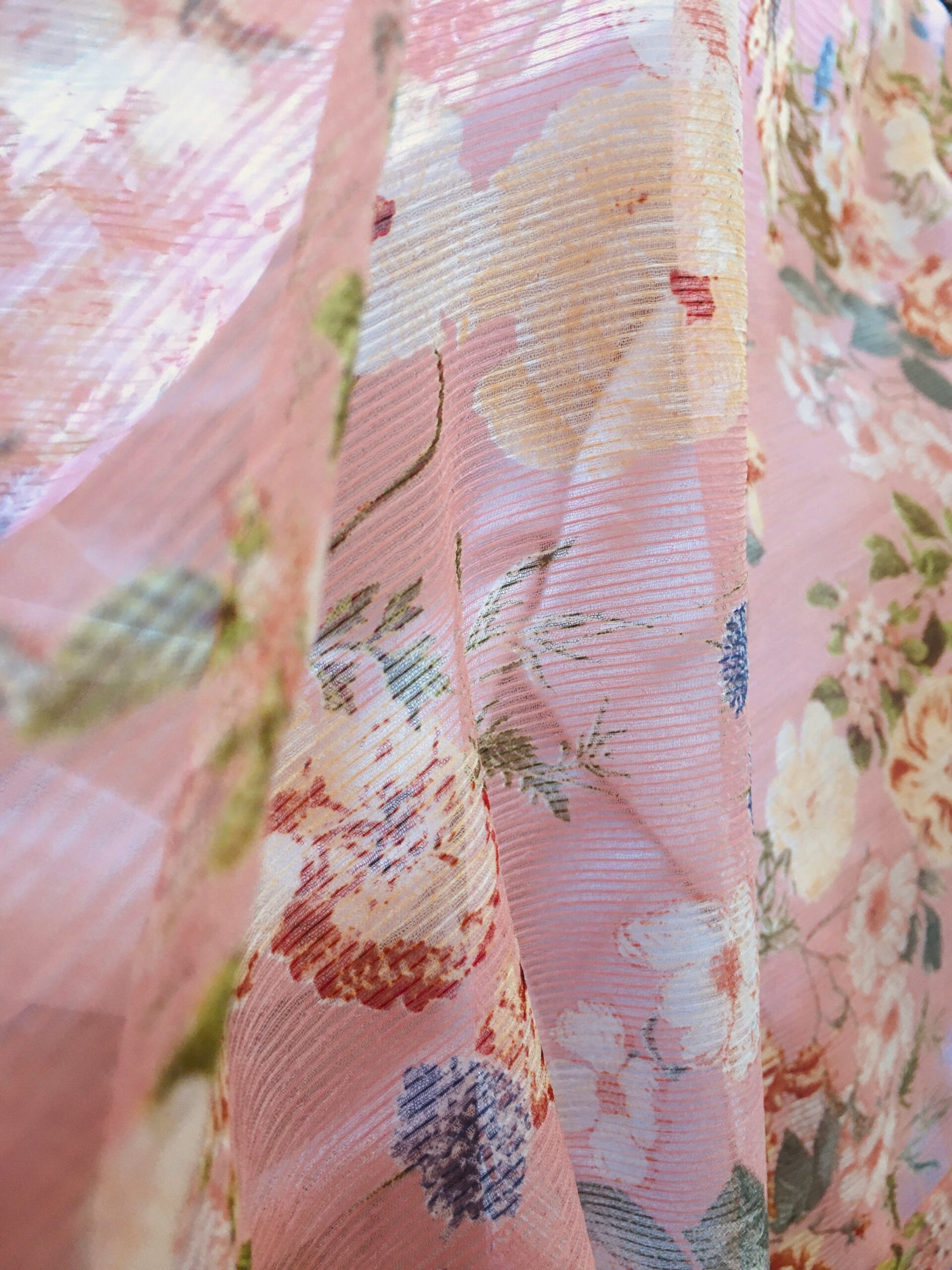
Professional photography captures the timeless elegance of your kimono experience
Imagine standing in a silk kimono beside a centuries-old wooden gate, the afternoon sun painting golden light on the fabric. These are not stock photos—they’re genuine memories, artfully preserved.
A photo session here is not just a souvenir; it’s a story you take home, a piece of Kyoto captured forever.
The Art of Nishijin-Ori: A Closer Look
One of the highlights of visiting the museum is discovering how nishijin-ori fabrics are made. This is a complex process involving more than twenty distinct steps—from dyeing the threads to setting up the loom and weaving the intricate designs.
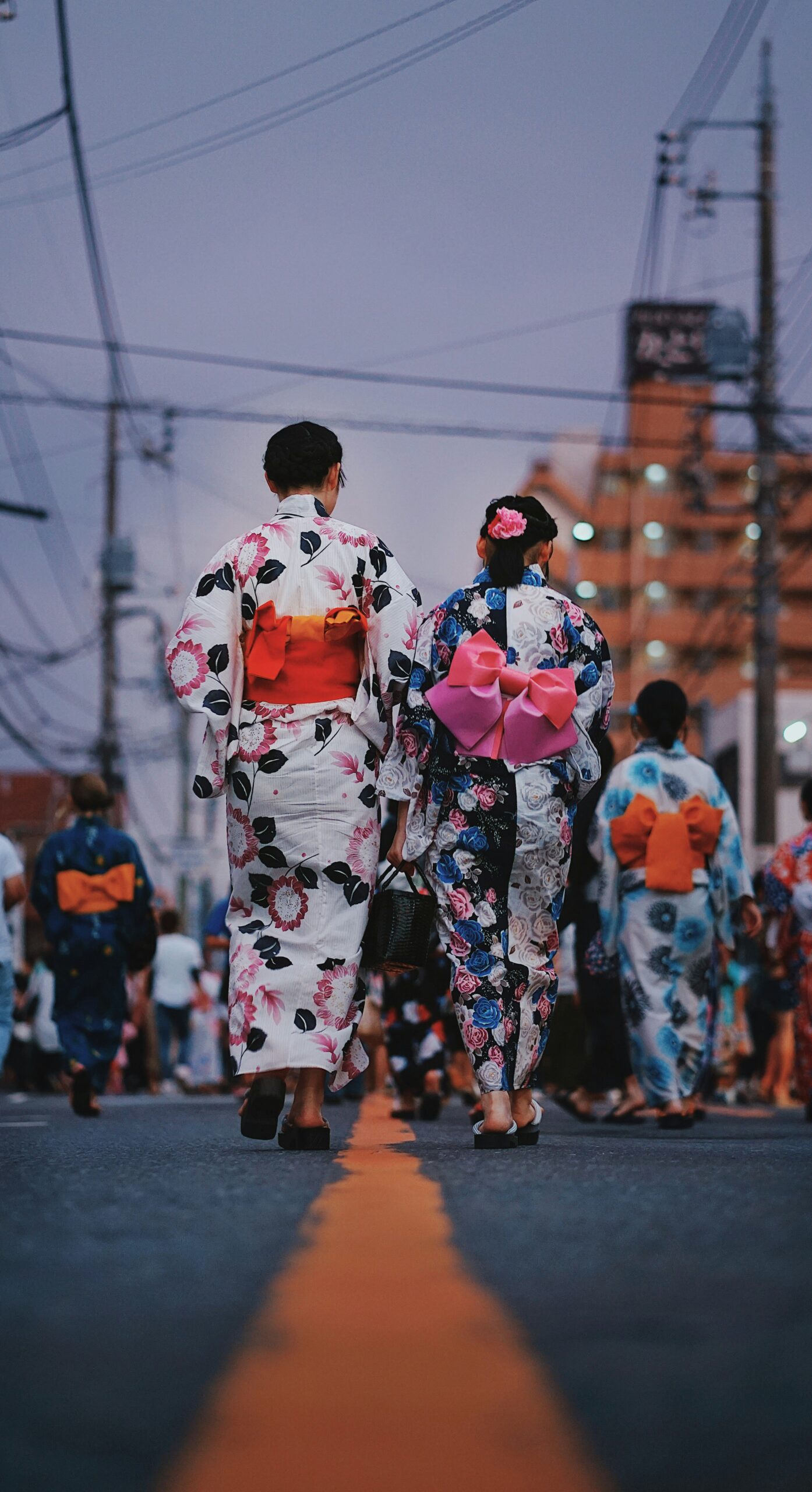
Exquisite Nishijin-ori silk brocade featuring intricate patterns woven with gold and silver threads
Traditional Nishijin textiles often include threads of real gold and silver. These metallic strands are delicately intertwined with silk to create shimmering, three-dimensional effects. Every inch of fabric is planned and woven with mathematical precision.
The patterns themselves are steeped in symbolism. Chrysanthemums represent longevity, cranes symbolize happiness, and flowing water suggests purity. Artisans may spend months perfecting a single kimono, and the result is nothing short of breathtaking.
When you walk through the exhibition hall wearing a kimono made with these same techniques, you realize that you’re not just visiting a museum—you’re stepping into a living art form.
Seasonal Beauty: When to Visit Kyoto
Kyoto changes dramatically with each season, and so does the kimono experience.
Spring (March–April) – Cherry blossoms bloom across the city, turning every street into a pink dreamscape. Photos taken in kimono under the sakura trees are among the most iconic images of Japan.
Summer (June–August) – Lightweight summer kimono (yukata) make it easier to stroll under the sun. Festivals like Gion Matsuri fill the air with color and music.
Autumn (October–November) – The city glows in red and gold as maple leaves turn. Nishijin’s narrow lanes become even more atmospheric in the soft autumn light.
Winter (December–February) – Snow dusts the tiled roofs of temples, creating quiet, poetic scenes. Deep colors and layered kimono bring warmth and contrast to the cold air.
Each season offers its own visual poetry, and AllPhoto-Kyoto can tailor your photoshoot to match the seasonal atmosphere.
Tips for an Unforgettable Visit
To make the most of your visit to the Nishijin Kimono Museum and your photo session, keep these practical tips in mind:
Go early in the morning to avoid crowds and capture soft natural light.
Wear light underclothes, as kimono layering can get warm, especially in summer.
Bring a small bag for your personal items—traditional kimono don’t have pockets.
Avoid perfume or lotion before wearing a kimono; it can stain the silk.
Mind your posture—standing and walking gracefully enhances both the experience and your photos.
Respect cultural etiquette—avoid eating, smoking, or sitting carelessly while in kimono.
Reserve ahead of time, especially during spring and autumn, when demand is highest.
Following these small steps ensures that your kimono experience is comfortable, respectful, and deeply rewarding.
Beyond the Museum: Explore the Nishijin District
While the Textile Center is the highlight, the surrounding neighborhood is full of hidden gems.
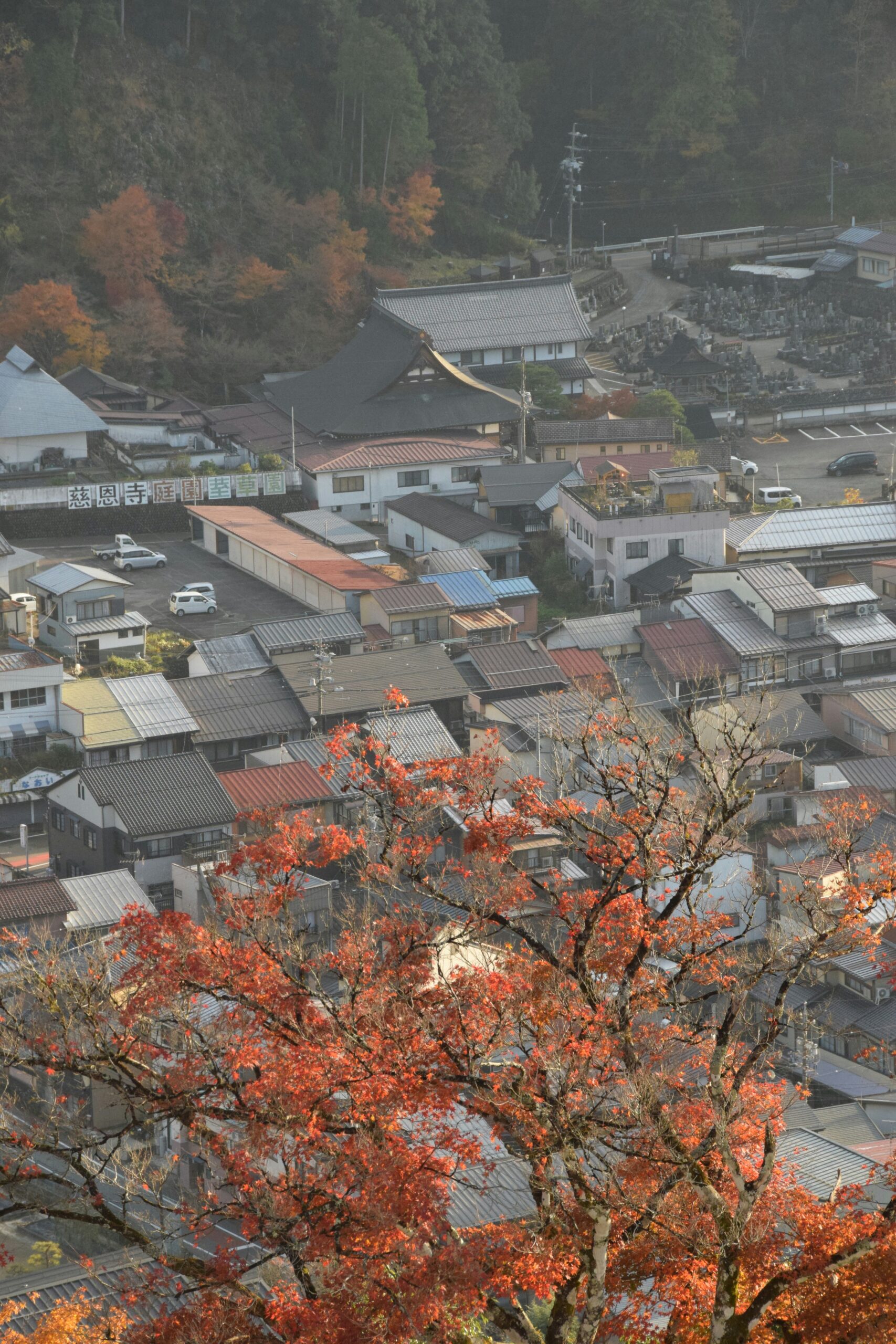
Explore the atmospheric streets of Nishijin filled with historic machiya townhouses
You can visit small artisan workshops that sell handcrafted fabrics, obi belts, and scarves made using traditional Nishijin techniques. Many offer direct demonstrations or short introductions in English.
A short walk away lies Kitano Tenmangū Shrine, famous for its plum blossoms and historic markets. The shrine’s grand torii gate and lantern-lined paths provide another beautiful setting for kimono photos.
For coffee lovers, the district also has charming cafés inside renovated machiya houses—perfect for resting after your museum visit. Try a matcha latte or Japanese sweet while still in your kimono; the combination of old and new Kyoto feels magical.
Why This Experience Resonates Globally
Around the world, people are rediscovering the value of cultural authenticity. The Nishijin Kimono Museum represents this perfectly: an experience that honors heritage while welcoming modern travelers.
For locals, it’s a source of pride. For visitors, it’s a bridge into Japan’s artistic soul.
By dressing in a kimono and learning about Nishijin’s artistry, you connect not just with Kyoto’s past, but with universal ideas of craftsmanship, patience, and beauty. It’s a quiet, meaningful form of cultural exchange.
The growing popularity of kimono experiences in Kyoto has also created a new wave of interest in sustainable fashion and artisanal textiles worldwide. Tourists who visit the museum often leave with a deeper appreciation for handmade garments—and a stronger desire to support local artisans.
Capture, Share, and Remember
When your visit ends, and you step back into modern Kyoto streets, you’ll carry more than photos. You’ll have a genuine memory—a blend of history, artistry, and emotion.
Share your experience online, post your photos on Instagram, write about it in your travel diary, or simply keep them as a reminder of a day when you lived inside Kyoto’s beauty.
And if you’re planning your trip now, don’t miss the chance to make it timeless.
Book Your Kimono Photo Session Today
Book your kimono photo session with AllPhoto-Kyoto and let Kyoto’s centuries of elegance become part of your story.
Final Thoughts
Kyoto is often described as Japan’s cultural heart, but in Nishijin, you can actually feel that heartbeat. The soft rustle of silk, the hum of the looms, the bright colors of brocade—all of it comes together in a single, unforgettable moment.
Visiting the Nishijin Kimono Museum dressed in a kimono isn’t just sightseeing—it’s transformation. It’s the rare kind of travel experience that lingers long after you return home.
Whether you’re drawn by art, fashion, or photography, this is where Kyoto’s spirit truly comes alive.

コメント